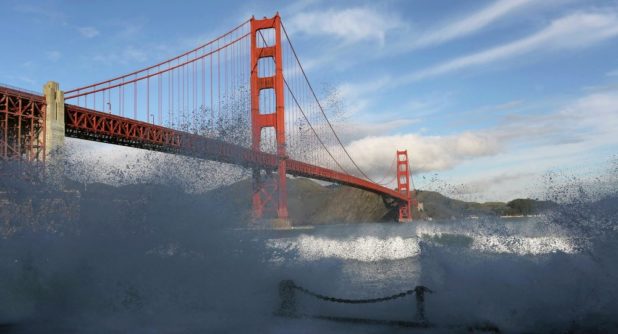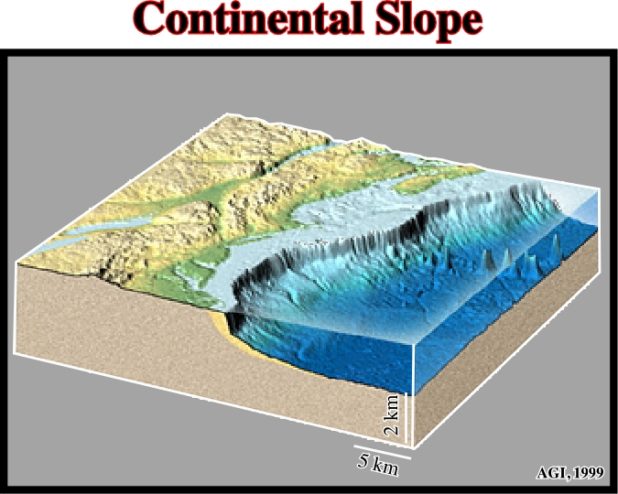Andrew Anglin
Daily Stormer
October 18, 2019
Is it sink time now?
A major California fault capable of producing a magnitude 8 earthquake has begun moving for the first time on record, a result of this year’s Ridgecrest earthquake sequence destabilizing nearby faults, Caltech scientists say in a new study released in the journal Science on Thursday.
In the modern historical record, the 160-mile-long Garlock fault on the northern edge of the Mojave Desert has never been observed to produce either a strong earthquake or even to creep — the slow movement between earthquakes that causes a visible scar on the ground surface. But new satellite radar images now show that the fault has started to move, causing a bulging of land that can be viewed from space.
“This is surprising, because we’ve never seen the Garlock fault do anything. Here, all of a sudden, it changed its behavior,” said the lead author of the study, Zachary Ross, assistant professor of geophysics at Caltech. “We don’t know what it means.”
The observations reported are another piece of evidence that illustrates a widely persistent myth that circulates in California and beyond — that quakes like the Ridgecrest temblors are somehow a good thing that makes future quakes less likely. In fact, generally speaking, earthquakes make future earthquakes more likely. Most of the time, the follow-up quakes are smaller. But occasionally, they’re bigger.
The creeping illustrates how the Ridgecrest quakes that began on the Fourth of July have destabilized this remote desert region of California between the state’s greatest mountain range, the Sierra Nevada, and its lowest point, Death Valley. Not only has the Garlock fault begun to creep in one section, but there’s also been a substantial swarm of small earthquakes in another section of the fault, and two additional clusters of earthquakes elsewhere — one south of Owens Lake and the other in the Panamint Valley just west of Death Valley.
Whether the destabilization will result in a major quake soon cannot be predicted. In September, the U.S. Geological Survey said the most likely scenario is that the Ridgecrest quakes probably won’t trigger a larger earthquake. Nevertheless, the USGS said that the July quakes have raised the chances of an earthquake of magnitude 7.5 or more on the nearby Garlock, Owens Valley, Blackwater and Panamint Valley faults over the next year.
…
What’s unusual now, Ross said, is that the Garlock fault has been seismically quiet in the historical record until now. And while it’s unclear what the creeping and aftershocks might mean for the near future, the newly recorded movement highlights how much of a potential risk the Garlock fault is to California, should it rupture in a big way.
A large quake on the Garlock fault has the potential to send strong shaking to the San Fernando Valley, Santa Clarita, Lancaster, Palmdale, Ventura, Oxnard, Bakersfield and Kern County, one of the nation’s most productive regions for agriculture and oil. Important military installations could also get strong shaking, such as Edwards Air Force Base, Naval Air Weapons Station China Lake and Fort Irwin National Training Center. The fault is crossed by two of Southern California’s most important supplies of imported water — the California and Los Angeles aqueducts — and critical roads like Interstate 5, state routes 14 and 58 and U.S. 395.
A major quake on the Garlock fault could then, in turn, destabilize the San Andreas. A powerful earthquake on a stretch of the roughly 300-mile-long southern San Andreas fault could cause the worst shaking the Southern California region has felt since 1857, and send destructive tremors through Los Angeles and beyond.
…
Earthquake scientists not affiliated with the study called the discovery of the triggered creep on the Garlock fault scientifically interesting that should be understood better, but emphasize that its implications are not clear. Although the Garlock hasn’t been observed to creep before in response to big quakes, other faults that have crept haven’t been seen to rupture in major quakes.
“It’s actually probably pretty common, and if that’s the case … that doesn’t necessarily mean it’s portending something terrible,” said Page of the USGS.
…
Despite the uncertainty, what’s happening in this region bears close scrutiny, given how the Garlock fault is an important major fault for Southern California. There are few big earthquakes that have been observed in California in modern times, and just because something hasn’t been observed in the past doesn’t mean it can’t happen.
We have discussed the theory that California will not sink into the Pacific Ocean, and it has been proven that this is a lie.
In actual, factual reality, it is only a matter of time before all of these assfuckers, Mexicans, kikes and whores all SINK for good.
And not the fake kind that so many homos FUCKING LOVE!
The very real kind that means ultimate damnation for sodomites and Mexicans.
 Daily Stormer The Most Censored Publication in History
Daily Stormer The Most Censored Publication in History




